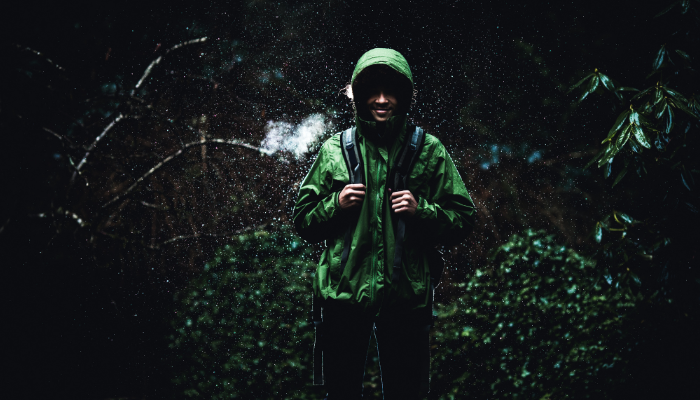
Hiking is one of the most enriching outdoor activities, allowing you to connect with nature while challenging your body and mind. But your journey’s success often starts with the right gear—especially your backpack. Choosing the correct hiking backpack can make or break your trek, whether you’re on a half-day hike or a week-long mountain expedition. In this article, we’ll explore the different types of hiking backpacks and help you discover which one suits your adventure best.
Introduction to Hiking Backpacks
Hiking backpacks are not just bags; they’re essential tools tailored for carrying your gear comfortably and efficiently. With so many types available, each serves a specific purpose based on trip length, terrain, and personal preference. Knowing your backpack type helps you stay organized, prevent fatigue, and protect your gear.
Daypacks (Under 30 Liters)
Daypacks are perfect for short trips where you only need essentials like water, snacks, a first-aid kit, and perhaps a light jacket. They’re lightweight, compact, and typically range from 15 to 30 liters in volume.
Key Features:
-
Minimal padding for lighter loads
-
Often include hydration bladder compartments
-
Ideal for urban hikes or nature walks
These are the go-to backpacks for casual hikers or travelers looking to explore nearby trails without overpacking.
Overnight Backpacks (30-50 Liters)
When your journey extends into a night out in nature, you’ll need more gear. Overnight packs, ranging from 30 to 50 liters, can handle extra layers, compact tents, and simple cooking gear.
Highlights:
-
External attachment loops for the gear
-
Better hip belt and shoulder support
-
Compartmentalized for easy access to sleeping gear and food
They strike the balance between comfort and capacity, making them a favorite for weekend warriors.
Multi-Day Backpacks (50-70 Liters)
For adventures that span multiple days, you’ll need a pack that holds more while distributing weight effectively. These multi-day backpacks are the workhorses of the hiking world.
Features:
-
Robust suspension systems
-
Integrated rain covers
-
Additional support, like load lifters and sternum straps
Perfect for 3–5-day hikes where self-sufficiency is key.
Extended Trip Backpacks (70+ Liters)
If you’re heading deep into the backcountry or trekking internationally for more than a week, you’ll need an extended trip backpack.
Advantages:
-
Designed for heavy loads (40-70 lbs)
-
Spacious enough for extra food, winter gear, and equipment
-
Great for mountaineers and guides
These are for serious trekkers tackling challenging and remote trails.
Hydration Packs
Compact and efficient, hydration packs include a built-in reservoir or bladder with a hose for easy drinking on the move.
Ideal For:
-
Trail runners
-
Bikers
-
Light hikers
Their convenience makes hydration seamless during fast-paced activities.
Frameless Backpacks
Frameless backpacks are ultralight options for minimalist hikers who want to carry less weight and move faster.
Pros:
-
Extremely lightweight
-
Compressible and easy to pack
-
Best for experienced ultralight backpackers
Keep in mind, they offer less support and structure.
Internal Frame Backpacks
These backpacks have a hidden frame that hugs your body, making them stable for uneven trails.
Features:
-
Sleek profile
-
Supportive padding
-
Ideal for alpine or off-trail hiking
They dominate the modern hiking scene for good reason.
External Frame Backpacks
With their visible metal frames, these packs offer excellent ventilation and load-carrying capability.
Best For:
-
Bulky, uneven loads
-
Long treks on trails with consistent terrain
-
Beginners and traditionalists
They of
Alpine Backpacks
Built for climbers and mountaineers, alpine packs are slim and feature gear loops, crampon holders, and ice axe attachments.
Designed To:
-
Fit snug against the back
-
Provide maneuverability
-
Withstand cold and rugged environments
Efficiency and compactness are top priorities here.
Technical Backpacks
These are specialty packs for activities like skiing, ice climbing, or photography.
Includes:
-
Avalanche gear pockets
-
Helmet holders
-
Quick-access compartments
Choose a technical pack if your hike has a specific purpose beyond walking.
Travel Backpacks for Hikers
A hybrid between luggage and hiking gear, these travel-ready backpacks are perfect for globetrotters.
Benefits:
-
Padded laptop sleeves
-
Carry-on compliance
-
Hidden straps for clean airport travel
Great for mixed travel and trekking trips.
Modular Backpacks
Customize your load-out with modular systems, including MOLLE webbing and removable compartments.
Ideal For:
-
Survivalists
-
Tactical adventurers
-
Military-style hikers
You can tailor these packs for any mission or hike.
Children’s Hiking Backpacks
Sized down for little explorers, these are light, colorful, and supportive.
Essentials:
-
Safety whistles
-
Adjustable straps
-
Soft padding
Introduce kids to the wild in a fun and safe way.
Women-Specific Hiking Backpacks
These are ergonomically tailored to fit women’s bodies.
Unique Features:
-
Shorter torso lengths
-
Contoured shoulder straps
-
Narrower hip belts
They ensure better weight distribution and comfort for female hikers.
Key Backpack Features to Consider
When choosing your backpack, consider these critical features:
| Feature | Description |
|---|---|
| Frame Type | Internal, external, or frameless |
| Suspension System | Distributes weight evenly |
| Access Points | Top, side, or panel loading |
| Ventilation | Mesh back panels to reduce sweat |
| Pockets & Loops | Organization and gear attachment |
How to Choose the Right Backpack
Match your backpack to your trip type, not just your gear.
-
Trip Duration: Short hikes need daypacks; long trips need multi-day or extended packs.
-
Terrain: Choose frame types based on flat or uneven trails.
-
Weather: Look for rain covers and waterproof materials.
-
Personal Fit: Always check for torso length and adjustability.
FAQs About Different Types of Hiking Backpacks
Q1: What size backpack do I need for a 3-day hike?
A: Go for a multi-day pack (50–70 liters) to fit sleeping gear, food, and essentials.
Q2: Are internal frame backpacks better than external?
A: Internal frames offer better balance for rugged terrain; external frames are great for ventilation and load balance on flat trails.
Q3: Can I use a daypack for overnight hiking?
A: Only if you’re packing ultralight and in warm weather. Otherwise, it’s not recommended.
Q4: What’s the best backpack for a child?
A: Look for lightweight, adjustable packs with safety features like whistles and reflective elements.
Q5: Do women need women-specific hiking backpacks?
A: Yes, they’re designed for anatomical comfort and better weight distribution.
Q6: Is it worth investing in a modular backpack system?
A: If you need customizability for changing conditions or roles.
Conclusion
Choosing from the different types of hiking backpacks depends entirely on your adventure’s length, complexity, and personal preferences. Whether you’re a beginner on a short trail or a seasoned trekker heading into the wilderness, there’s a backpack tailored for you. Always prioritize fit, functionality, and the features that matter most to your hiking style.



